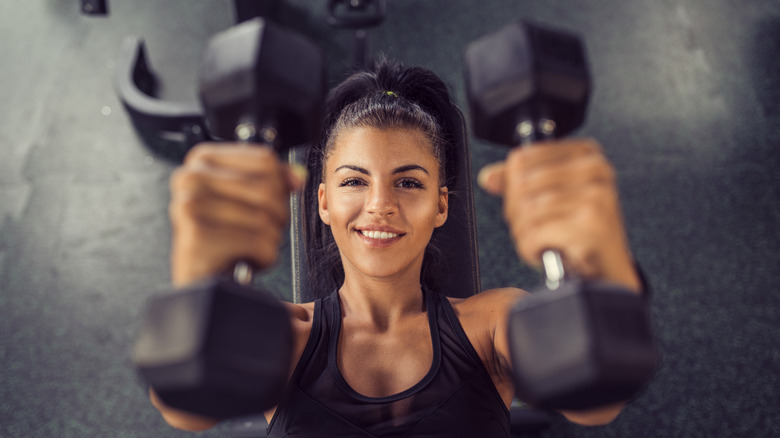Does Weightlifting Lower Blood Pressure?
Do you enjoy lifting weights at home or the gym? Or maybe you're looking into starting a weightlifting workout routine and are learning about some of the health benefits. There are a few ways to incorporate weightlifting into your workouts — using weight machines, resistance machines, dumbbells, kettlebells, or wrist and ankle weights. The United States Department of Health and Human Services recommends adults strength train at least two days a week at a moderate intensity, working all major muscle groups.
Muscle burns more calories than fat. For example, a 2017 study published in Obesity found that a combination of weight training and a low-calorie diet generated more fat loss than just walking and a low-calorie diet. The study included 249 participants who were overweight or obese adults ages 60 and older. The Mayo Clinic agrees, noting that the more muscle you have, the more calories you burn, even when not exercising.
Weightlifting can reduce your risk of stroke or heart attack up to 70%, and you only have to do it for an hour a week, according to a 2018 study published in Medicine & Science in Sports & Exercise. The study included 12,591 participants with a mean age of 47.
Weightlifting has so many health benefits, and it doesn't end there. Pumping iron can even lower your blood pressure.
Blood pressure benefits
Strength training, which includes lifting weights, using resistance bands, or utilizing your own body weight, is highly beneficial for your blood pressure. According to Harvard Health Publishing, your blood pressure and heart rate increase when you exercise to supply more oxygen to your muscles. However, that doesn't mean you shouldn't exercise if you have high blood pressure. It's quite the opposite. Weightlifting can lower your blood pressure when done consistently. The Mayo Clinic explains that exercising regularly strengthens your heart, which helps pump more blood with less effort, lightening the load on your arteries and decreasing your blood pressure.
Be cautious, though when weightlifting if you have high blood pressure. Lifting a heavy item can cause a spike in your blood pressure, especially if you hold your breath. Focus on your breathing to avoid a spike, breathing in and out during each rep. Don't just hop on a machine and try to lift heavy weights (via Harvard Health Publishing).
You can start with resistance bands or light dumbbells to help your muscles get used to the movement if you're a beginner. Harvard Health Publishing recommends eight to 12 reps for one set, resting for a minute in between. Then, work your way toward three sets. Once you can do that with ease, you can move up in weight or resistance level. Consult a personal trainer for help with your form and tips for beginners, including how heavy your weights should be and when to make your workout more difficult.


